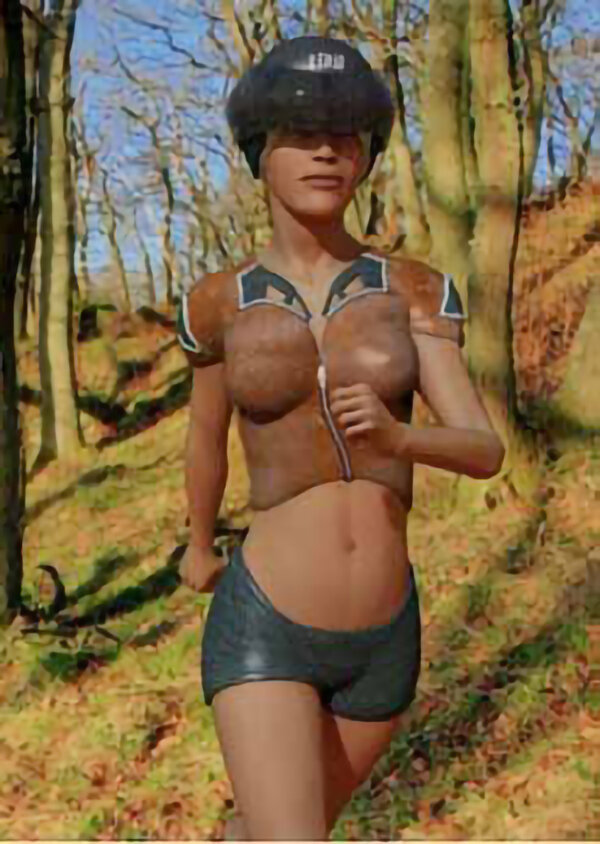
SINGLE vs MULTIPLE VIEWPOINTS
As stated before, in Geometric Art, it is a given that scenes are viewed from a single perspective, framed in space and frozen in time. Photography is the embodiment of this---a flash of reality as seen from a single aperture.
This photographic realism actually took hold during the Renaissance, with the development of perspective drawing, along with the invention of the camera obscura, a gizmo that allowed artists to trace scenes projected onto a surface like a wall or a canvas, adding an even greater level of verisimilitude to their pictures---early Photoshop.
A painting like The Oath of the Horatii (above) by the neo-classical proto-fascist Jean-Louis David (Napoleon’s house artist) is one obvious example, with its clean lines, invisible brushwork, realistic details, and stagey poses that practically demand dialogue balloons. His figures might as well be statues and the picture frame a proscenium arch.
Of course, today’s 3D graphic programs make David look like Monet. Compare Horatii to Alyson by Ted Czotter, and note the neo-classic ideal given a modern twist---now the chicks are wearing the helmets. More to the point, each pixel is digitally callibrated with geometric precision----perfect curves, perfect shapes, perfect lighting, perfect perspective---yet for all that perfection, Alyson looks like she’s made of wax. Regardless of the technology, both The Oath of the Horatii and Alyson are pictures viewed from a single perspective, gridding space and stopping time.
In Organic Art, with its floating structure orbiting a Nodal Point, one invites multiple perspectives, existing in a similarly fluid temporal reality, which are assembled by the viewer to create a single composite image. Pablo Picasso made this explicit in his Analytic Cubism phase, in works such as Portrait of Ambroise Vollard with its interlayered planes. Our gaze wanders through the picture, turning this way and that, zooming in, panning out, the image held together by its own internal design.
It’s no coincidence that Picasso grew up on kinetoscopes: short silent films that you handcranked, allowing you to view the black-and-white frames one by one if you liked, stopping to inspect some choice image before moving on, mesmerized by the jerky shifts in motion. In Portrait of Ambroise Vollard, Picasso pulls off the effect of motion through time in a single image:
Picasso arrived at this innovation in part through insights he (along with his partner Georges Braque) gleaned from studying Cezanne’s later paintings, with their tension between 2-D pattern and 3-D depth. Paintings like Still Life with Apples and Oranges, where quirky shifts of perspective seem to mimic the artist inspecting the objects from different angles.
Since Geometric thinking is a fundamentally Western concept, it’s not surprising that Organic thinking should be prevalent in the East. Certainly, the Organic view is implicit in ancient Japanese scroll paintings, like Tensho Shubun’s Landscape of the Four Seasons (below). Washes of ink evoke mountains and valleys in a kind of sequential perspective that is aesthetically consistent, if not geographically accurate. The composition has more to do with the internal rhythms of the drawing than with arranging objects in Cartesian space.
Being astigmatic and nearsighted, I have always worn glasses, and each eye gets a different prescription; without glasses, I’m not only seeing things from two different angles, but I’m also seeing things from two different degrees of distortion and focus, with my brain trying to patch the contrasting pictures together, based on what it already “knows” about the way the world works. Similarly, preconceptions, opinions, feelings and prejudices are all filters through which I interpret what I see. One could even say that I choose what to see.
This is one of the reasons why the Organic pictures of Rembrandt, like the magnificent Portrait of Jan Six---with its spontaneous brushwork and subjective shading, emphasizing certain features over others (like our mind does)---seem more deeply real than the finely polished classicism of David and his ilk.
argue that the single perspective of Geometric Art is less real than the floating perspective of Organic Art, for the following reasons:
Humans have two eyes. We naturally see from two perspectives, which we assemble together in our brain.
Our eyeballs are round, not flat, so that our direct vision is in sharper focus than our peripheral vision.
Persistence of vision means that an object leaves a trace image of itself in the moments after it has registered on our retina, like the spots in your eyes after a flash goes off. This leads to motion blur (to say nothing of motion pictures) as well as a myriad of subconscious visual effects.
Past experiences color our reactions to present phenomena. We are predisposed to recognize what we already believe to be true. We see things as much with our feelings as our minds. So what we “see” is not so much a snapshot as a collage of images and responses jumbled together in the brain, then reinterpreted into a single picture of reality, which varies with each individual.






